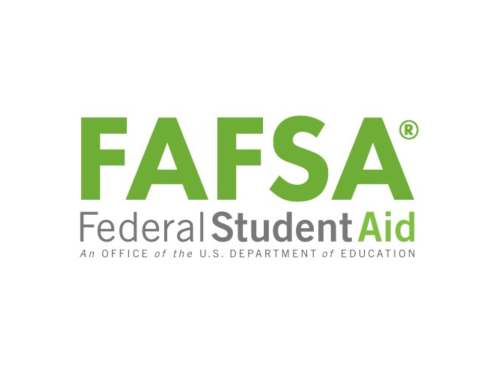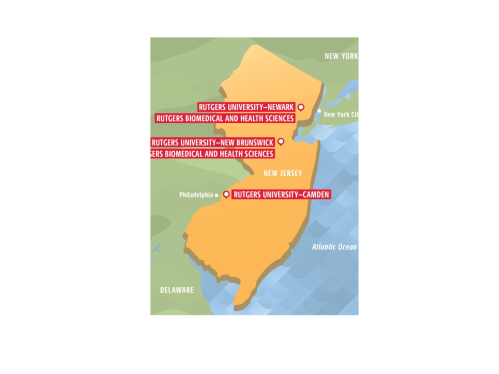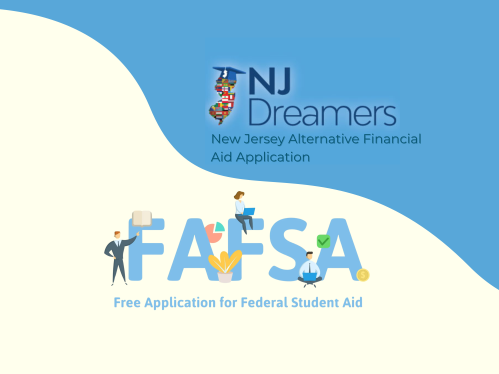Paying for College

Scarlet Hub
Manage your college finances with ease. The Rutgers Financial Services page on Scarlet Hub offers key info on financial aid, billing, refunds, and important deadlines—all in one place.
Explore your Financial Aid Options
Exploring your financial aid options involves understanding the various forms of aid available, including need-based grants, merit-based scholarships, work-study opportunities, and loans. Researching federal, state, institutional, and external resources is essential to maximize the financial support for your college education.

Step 1: Understand Financial Aid Types
- Need-Based Aid: Based on family income (e.g., federal grants, work-study).
- Merit-Based Aid: Awarded for academic, athletic, or other talents.
- Loans: Must be repaid with interest.
- Scholarships and Grants: Do not require repayment.
- State-Specific Programs: Tailored to your state, like New Jersey’s TAG or EOF programs.

Step 2: Complete the FAFSA
Create Your FSA ID
- Visit studentaid.gov to create an FSA ID for yourself and one for a parent (if dependent).
- Your FSA ID will allow you to sign the FAFSA electronically.
- Gather the required documents
- Visit fafsa.gov to fill out the form.
- Use the IRS Data Retrieval Tool to import tax information directly.
- Add up to 10 colleges to your FAFSA to send your information.
- Submit and Save Confirmation: Ensure you save the submission page for your records.

Step 3: Research State Aid
- Visit your state’s financial aid website to learn about state programs (e.g., TAG, NJ STARS, EOF in New Jersey).
- Tuition Aid Grant (TAG) – TAG offers need-based assistance to NJ residents enrolled at eligible colleges and universities and covers a substantial portion of tuition. This is money that you do not need to pay back.
- New Jersey College Promise is composed of two programs: the Community College Opportunity Grant (CCOG) and Garden State Guarantee (GSG) – that provide an affordable pathway to a college degree. CCOG and GSG help cover the cost of an eligible student’s tuition and approved educational fees when they attend their local community college and then transfer to a four-year public New Jersey institution.
- New Jersey Student Tuition Assistance Reward Scholarship (NJ STARS) – A merit-based scholarship program that provides students who rank in the top 15% of their class during junior/senior year of high school with free tuition if they enroll at their home county colleges. Eligible students can also receive additional financial aid through NJ STARS II if they transfer to a four-year college or university in the state to pursue their bachelor’s degree.
- Educational Opportunity Fund (EOF) – provides financial assistance and support services to students from educationally and economically disadvantaged backgrounds who attend participating colleges in NJ.
- New Jersey Scholarships – The state administers several merit-based and need-based scholarship opportunities.
- Check eligibility requirements and deadlines.

Step 4: Apply for Institutional Aid
- Some schools automatically consider FAFSA information to determine financial aid packages (e.g., RUN to the TOP, Bridging the Gap, Scarlet Guarantee at Rutgers).
- Make sure to review the school's website for any additional applications or forms.
Rutgers Aid
- RUN To the Top @ Rutgers–Newark – provides a “last-dollar” financial aid scholarship that covers the cost of in-state tuition and mandatory fees. The scholarship is offered after all federal, state, institutional, internal/external scholarships and grants have been applied for. Students must meet the program’s eligibility and income requirements. No separate application is required for this scholarship. This is money that you do not need to pay back.
- Bridging the Gap @ Rutgers–Camden – ensures that eligible students pay a fixed amount for their annual tuition and mandatory fees. Rutgers University–Camden applies this special “last dollar” financial aid program to the remaining costs of your in-state tuition and additional mandatory fees after any other need-based federal, state, and/or institutional aid has been applied. This is money that you do not need to pay back.
- Scarlet Guarantee @ Rutgers–New Brunswick – is a signature Rutgers–New Brunswick program designed to make college more accessible and affordable, offering a “last dollar” financial aid award that covers the cost of in-state tuition and eligible fees for qualified students who have earned less than 60 credits. Together with the Garden State Guarantee, these programs provide a transformational opportunity for students that bridges the gap in resources needed to start and complete their higher education. This is money that you do not need to pay back.

Step 5: Search for Scholarships
- Start with online tools like:
- Apply to a mix of local, national, and program-specific scholarships.

Step 6: Explore Additional Resources
- Work-Study: If eligible, work-study opportunities will be listed on your financial aid offer.
- G.I. Bill Benefits: Check eligibility if you or a family member has served in the military.
- Merit-Based Opportunities: Investigate awards based on academics or talents.

Step 7: Review, Respond, Verify, and Renew
After submitting your FAFSA and applications:
- Colleges will send you Financial Aid Award Letters.
- Compare offers, focusing on grants, scholarships, work-study, and loans.
- Look for programs like “last dollar” scholarships that fill tuition gaps (e.g., Scarlet Guarantee, Bridging the Gap).
- Accept or decline parts of the aid package through the college’s financial aid portal.
- Verification: If selected for verification, provide requested documents promptly.
- Maintain your eligibility. Ensure you meet GPA and credit requirements for renewable aid.
- Reapply for FAFSA each year and check scholarship renewal criteria.









2024 Finance Your Education Guide
This brochure helps students and families understand college costs and financial aid. It explains tuition, scholarships, grants, loans, and work-study. It also gives easy steps for filling out the FAFSA and shows how to plan payments. This guide is a great tool to help you learn how to pay for college and make wise choices. Download it to get started on your financial aid journey!

Eligibility & Required Forms for Financial Aid
- U.S. Citizen, U.S. National, U.S. Permanent, Conditional Resident
- Eligible for: Federal Aid, State Aid, Rutgers Aid
- Forms to File: Free Application for Federal Student Aid (FAFSA)
- N.J. Dreamer
- Eligible for: State Aid, Rutgers Aid
- Forms to File: New Jersey Alternative Financial Aid Application(NJAFAA)

Free Application for Federal Student Aid (FAFSA)
FAFSA is the application required by all schools that award federal student aid. Even if a student does not believe they qualify for aid, completing the FAFSA is the first step in qualifying for scholarships or grants.
- Go to studentaid.gov
- Create a separate Federal Student Aid (FSA) ID for yourself and your parent/guardian
- Gather the required documents and information (Parent or spouse contributor name, date of birth, Social Security number, email address, and income and asset information)
- Complete and Submit the FAFSA Form (The Rutgers Federal School Code is 002629)
New Jersey Alternative Financial Aid Application (NJAFAA)
NJAFAA (New Jersey Alternative Financial Aid Application) is the New Jersey application available to Dreamers who may not qualify for federal aid.
- Create a login for NJFAMS (NJ Financial Aid Management System)
- Access your NJFAMS Account
- Select “Apply Online for New Jersey Financial Aid (NJ Dreamer Students Only) to compete the current year application

Deadlines
Students are encouraged to complete the application process within the priority deadlines to maximize the aid they qualify for.
The FAFSA form must be submitted by 11:59 p.m. Central time (CT) on June 30, 2025. Any corrections or updates must be submitted by 11:59 p.m. CT on Sept. 14, 2025.

Glossary of College Terminology
The college application process can feel overwhelming with its unfamiliar terms and jargon. Our comprehensive glossary simplifies this journey by breaking down common terminology, making the process clearer and easier to navigate.